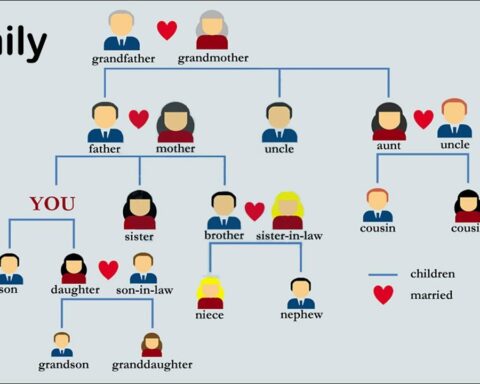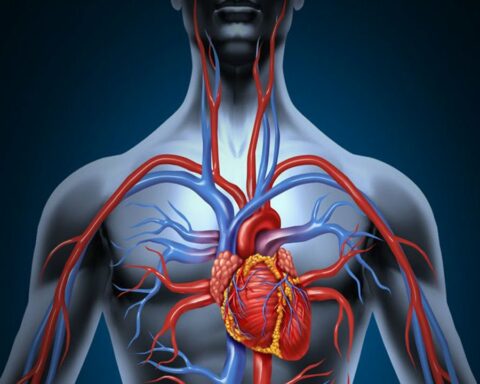It can be part of a healthy diet when pasta is eaten in moderation. Pasta is a high-carb meal and contains gluten of which both can be bad for your health in large amounts.
Pasta is a convenient meal and it can be consumed alongside several dishes. Similarly, there are different types of pasta from which you can choose. Unfortunately, eating pasta simply offers empty carbs and as people get to learn more about carbs, glycemic index (GI), and gluten, one may ask him/herself: is pasta healthy?In this article, you will get to more about the benefits and shortcomings of consuming pasta.
What Is Pasta?
Pasta is simply a type of noodle. Its preparation involves the traditional incorporation of eggs, durum wheat, and water. They are then molded into preferred and desired shapes and lastly cooked in boiling water.
Additionally, pasta can be made from common wheat as which makes part of many varieties of pasta that we buy nowadays. Some manufactures can also make it from buckwheat, rice, barley, and other grains.During the processing stage, some pasta is highly refined leaving them with little nutrients since the germ and the bran in wheat have been removed. As a way of compensating for the lost nutrients, some nutrients such as iron and B vitamins are added back to enrich the pasta.
On the other hand, you can also find whole-grain pasta in the market at an affordable price. In many cases, many people mostly consume the following types of pasta: orzo, spaghetti, fettuccine, ravioli, macaroni, tortellini, and penne. Cheese, meat, vegetables, sauce, and herbs are the common toppings used for the preparation of pasta.
The Consumption of Refined Pasta Is High
Refined pasta is that type that has been typically made by wheat that has been stripped of germ, bran, and several nutrients. Many people prefer taking this type of pasta.
The disadvantage of consuming refined pasta is that it leaves people with a decreased feeling of fullness. This is because the calorie content in it is high with lower fiber content. It is, therefore, important that you take whole-grain pasta which is usually loaded with fiber.
One study by the National Center for Biotechnology Information found that consuming whole-grain pasta increases fullness and results in a lowered appetite as compared to refined pasta. Nevertheless, mixed findings regarding the importance of whole-grain pasta have also been reported. According to one study findings published in the National Institutes of Health, reported no significant findings in blood sugar levels after 16 participants ate refined or whole-grain fiber.
That does not mean that eating refined carbs is healthy for you. After examining 117,366 participants, the researchers at the National Center for Biotechnology Information found that the risk of heart disease can be increased with a high intake of refined carbs.Other health problems are also associated with increased consumption of refined carbs. These include increased blood pressure, waist circumference, blood sugar, and insulin resistance. Also, it can lead to increased levels of “bad” low-density lipoprotein (LDL) and blood triglycerides.
Nutritional Comparison Between Whole-Grain and Refined Pasta
Whole-grain pasta is highly nutritious. This is because it contains copper, fiber, manganese, selenium, and phosphorus. Enriched and refined pasta on the other hand contains high amounts of B vitamins and iron.
Only a few calories, some micronutrients, and high fiber are also present in whole-grain pasta than in refined ones.
Fiber escapes digestion in the upper digestive tract and prolongs the feeling of fullness. Based on this reason, eating whole-grain pasta is more effective in reducing appetite and cravings than refined pasta.
According to the database in Self NutritionData, consuming one cup of cooked whole-wheat spaghetti offers the following nutrients: 174 calories, 7.5 g of protein, 37 g of carbs, 6 g of fiber, 0.8 g of fat, up to 52% of the recommended daily value (RDV) of selenium, 97% of the RDV of manganese, 12% of the RDV of copper, 12% of the RDV of phosphorus, 10% of the RDV of vitamin B1, 2% of the RDV of vitamin B9, 5% of the RDV of vitamin B3, and 4% of the RDV of vitamin B2.
On the other hand, the same amount of enriched and refined cooked spaghetti provides the following nutrients: 220 calories, 8.1 g of protein, 43 g of carbs, 2.5 g of fiber, 1.3 g of fat, up to 53% of the (RDV) of selenium, 23% of the RDV of manganese, 7% of the RDV of copper, 8% of the RDV of phosphorus, 26% of the RDV of vitamin B1, 26% of the RDV of vitamin B9, 12% of the RDV of vitamin B3, and 11% of the RDV of vitamin B2.
There Is High Amount of Carbs in Pasta
According to the nutritional values above, it is clear that pasta is high in carbs with just one cup of cooked spaghetti boasting 37-43 g of carbs. Carbs have a tendency of causing a quick spike in blood sugar levels because they are also broken down into glucose at a higher rate. This glucose enters the bloodstream.
Consumption of high amounts of carbs can lead to increased appetite and overeating. Therefore, people with diabetes should only take a reduced amount of carb while increasing fiber intake. Diets high in carbs have also been associated with health problems such as metabolic syndrome, obesity, and diabetes. All of these conditions increase your risk of heart disease.
Pasta Contains Gluten
There are numerous types of proteins and gluten is one of them. It is present in rye, wheat, and barley mostly. It is well tolerated in most people. However, in certain individuals, especially those with celiac disease, gluten can cause severe reactions that can damage cells of the small intestines. Such people should thus avoid eating pasta and any food that contains gluten.
Conclusion
Pasta is a type of wheat product made by mixing eggs, durum wheat, and water. They are sold in different shapes and flavors. Pasta offers a convenient way of adding carbs to your diet. However, consumption of high carbs can be detrimental to your health and is associated with obesity and diabetes. Gluten in pasta can also cause reactions in those with celiac disease.
- Products That Assist with Stress Relief - September 21, 2023
- TRÈFLE – THE ROAD TO THE 15TH - July 29, 2023
- Lovingly thought out educational toys - July 5, 2023









